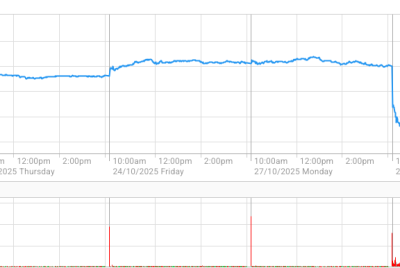Australians Staying On Top Of Bills Despite Rate Hikes, Record Mortgage Debt: RBA Assistant Governor

Defying initial concerns, Australians have managed to stay on top of their bills, despite higher household debt linked to variable rates and greater exposure to rising interest rates compared to other developed countries, the country's central bank revealed Monday.
"Mortgage arrears rates have risen, but they remain low and at similar levels in Australia and the United States," News.com quoted Assistant Governor of the Reserve Bank of Australia (RBA) Christopher Kent as saying. "This is despite the significant rise in required mortgage payments in Australia."
Australia's mortgage market is unique in that about 80% of home loans have variable interest rates, making borrowers more vulnerable to changes in the cash rate. Kent pointed out that the 13 increases in the cash rate until November 2023 should have caused financial distress among borrowers, theoretically making Australians more exposed to rate hikes than people in other countries. But, Australians beat the challenges and managed to cope with the rising rates.
Kent said the strong financial position Australians built during the pandemic could be a key factor in being resilient, as consumer spending decreased, while government subsidies helped boost wages in some cases.
"In 2022, only around 15% of new owner-occupiers borrowed more than 80% of their maximum assessed capacity," he said.
Questioning the focus on monetary policy, he noted that it was just one aspect of the broader policy. There's no evidence that monetary policy was more effective in Australia than in other developed countries, Kent stated.
"This influence of monetary policy on the cash flows and behavior of variable rate borrowers receives a lot of attention in Australia," Kent said. "However, this is only one of the channels of monetary policy and there is no evidence that monetary policy overall is more potent in Australia than in other advanced economies."
Moreover, while most Australian home loans have variable interest rates, many households are paying off their loans faster than required. Extra payments made into offset and redraw accounts now account for over 20% of the total outstanding mortgage debt, Reuters reported.
"This outcome reflects several features of the Australian mortgage market that collectively leave most borrowers with buffers that help them to manage through a period of higher interest rates," said Kent.
The RBA said that low unemployment and banking regulations, including the Australian Prudential Regulation Authority's requirement for a minimum 3% serviceability buffer, have helped ensure that homeowners were able to meet their financial obligations.
© Copyright 2025 IBTimes AU. All rights reserved.





















